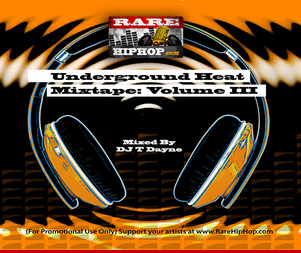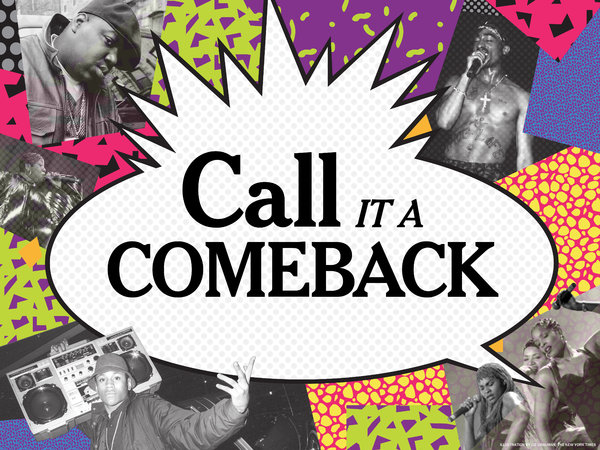Oldies radio used to mean Johnny Mathis and the Four Seasons. Now it’s Tupac Shakur and LL Cool J.
Those rap stars, along with the Notorious B.I.G., Missy Elliott, Salt-N-Pepa and De La Soul, are some of the standbys of radio’s hottest new format, classic hip-hop, which in just two months has spread around the country as broadcasters capitalize on the nostalgia of the hip-hop generation.
“Listeners who grew up on this music, in the late ’80s and into the ’90s, are now 40 years old,” said Jay Stevens, a programming executive at Radio One, the company that started the trend in October when it introduced Boom 92 in Houston, replacing a poorly performing news station.
“You still love this music, but it wasn’t being exposed on a regular basis at any radio station,” Mr. Stevens added. “So now you’ve found a home.”
Within a month, the ratings for Boom 92 (KROI-FM, 92.1) more than tripled, and Radio One — a national chain of 54 stations that cater largely to black audiences — added the format in Philadelphia, Dallas and Atlanta. Other broadcasters quickly followed suit. At least nine variants have arrived in recent weeks, stirring excitement among listeners and yielding one of radio’s most enduring signs of success: a format turf war.

In Dallas, Radio One’s classic hip-hop outlet, KSOC-FM (now known as Boom 94.5), was briefly pitted against another from Cumulus Media that adopted the format temporarily. In Atlanta, three stations are squaring off. An independent company, Core Communicators, was first, introducing Old School 99.3 on Nov. 18, and within days both Radio One and Cumulus started rivals.
IHeartMedia, the giant broadcaster formerly known as Clear Channel, already has two such stations, KMJM-FM (100.3) in St. Louis and WSOL-FM (101.5) in Jacksonville, Fla. The Cox Media Group chain also has four throughout Florida.
Hip-hop emerged in New York in the 1970s and had its first hit with the Sugarhill Gang’s “Rapper’s Delight,” released in 1979. So far the classic (or “throwback”) hip-hop radio format is taking shape around a core of hits from the period spanning the mid-1980s to the early 2000s, with N.W.A, Snoop Doggy Dogg and Ms. Elliott represented in abundance.
Programmers sometimes add some R.&B. and are blending in regional variations. Boom 92, for example, started out with a song by the Geto Boys, a Houston gangsta rap group, and in Atlanta, the Radio One station Boom 102.9 opened with Ludacris, who grew up in the city. But the new format’s most popular rappers are Shakur and the Notorious B.I.G., who are still revered as lyrical virtuosos nearly two decades after their deaths.
“Hip-hop is old enough now to have entered the realm of credible nostalgia,” said Tom Silverman, the founder of the pioneering hip-hop label Tommy Boy Records. “I’m sure there are kids now who think ‘3 Feet High and Rising’ by De La Soul is a rite of passage, just like Led Zeppelin is.”
Radio stations frequently experiment with formats to find something that sticks. Sean Ross, a radio analyst at Edison Research, says that most major broadcasters are engaged in a familiar chess game, preparing to change — or “flip” — stations over to classic hip-hop to beat a competitor, even if that means changing over a successful one
“Everybody is looking at their market and wondering whether there’s an opportunity, and also wondering, ‘If I don’t do this, who else will?’ ” said Mr. Ross, who compares the format’s explosion to the arrival of classic rock radio in the 1980s.
Stations have tried to feature hip-hop oldies before. KDAY-FM (93.5) in Los Angeles, for example, has had a similar format since 2009. At that time the station had an audience of about 500,000 people a week but now regularly reaches over one million, according to Nielsen. Sirius XM also has a classic hip-hop station, Backspin.
But programmers say that the time is right for the format. The new stations target an age group of 35- to 49-year-olds, who grew up with rap but may be out of touch with the genre’s latest developments.
Mr. Stevens and other programmers say the format has a wide crossover appeal. Some also say the older hits recall an era when rap played a stronger role in defining black culture.
“Don’t get me wrong. I think Drake is great,” said Doc Wynter, the senior vice president for urban programming at iHeartMedia. “But hip-hop back then was about telling a story about your struggle and your family’s struggle. Now the reigning hip-hop king is a multiracial guy from Toronto who did not struggle.”
For Radio One, another benefit is that classic hip-hop stations are often cheaper to run than the ones they replace. In Houston, the company laid off 47 employees in October, when KROI ended its news format. In an earnings call with investors last month, Radio One executives bragged about Boom 92’s early ratings and said that music formats in Houston and elsewhere would help the company turn around its $1.5 million loss from news stations.
Classic hip-hop is one of radio’s first format rushes in years, but executives and analysts are divided on whether it has staying power. Some broadcasters, like Cox, have hedged their bets by characterizing the new format as a change for the holiday season, a time when radio stations frequently experiment with temporary programming stunts.
Mr. Stevens, of Radio One, declined to comment on the company’s plans but said he was bullish about the format. John W. Dickey, the executive vice president for content and programming at Cumulus, said he had plans to make classic hip-hop part of its offerings through Westwood One, the company’s syndication unit.
“This is a format that I believe in,” Mr. Dickey said. “It’s here to stay. It has legs.”
Others were less sanguine. Steve Hegwood, chief executive of Core Communicators, said he viewed Atlanta’s three classic hip-hop stations as too much for the market there to bear.
“I think it’s a case of overkill,” Mr. Hegwood said. “We’ll see who will outlast who.”
nytimes.com



